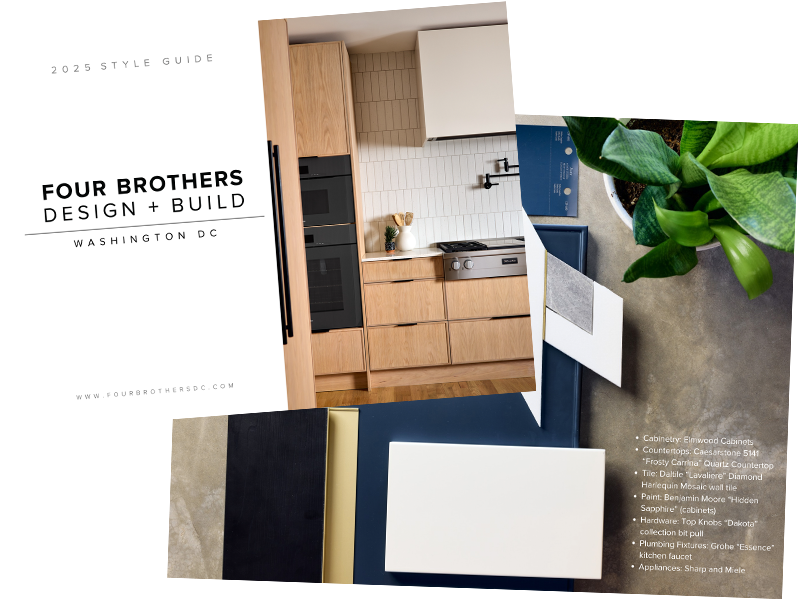Much like the electrical wiring, the plumbing portion of a remodeling project is generally done in two phases: rough-ins, and final hookups. (This two-stage process holds true in a project of any size, from small-scale kitchen and bath remodels, to large-scale house renovations.) Rough-ins take place once framing is complete, but before walls are closed in. Final hookups are completed near the end of the remodeling project, and involve connecting kitchen appliances and bathroom accessories to roughed-in plumbing pipes.
The object of the rough-in stage is to run water supply lines, waste removal piping, vents, and gas lines to all necessary locations throughout the house: bathrooms, sinks, kitchen appliances, washing machines, etc. Although cast iron or ABS (acrylonitrile butadiene styrene) can be used, waste removal lines and vent stacks are almost always run using regular PVC piping due to lower cost and increased efficiency. When it comes to water supply piping however, a plumber has a number of options. For the project at 753, we considered using either copper, or PEX (cross-linked polyethylene) piping; both of which are described briefly below.
Copper:
Copper piping has been used for water supply lines for the past 80 years or so, and is generally very durable, unless pipes freeze or the water supply is abnormally high in mineral content or acidic. (When this is the case, dreaded “pin-hole” leaks can form, which must be repaired by removing a small section of piping and replacing with new.) Typically, single lines supply water to a designated area (i.e. kitchens, baths), with pipes branching off to feed individual fixtures (toilets, sinks, dishwashers etc.). Copper is rigid, requiring soldered joints when pipes branch or turn corners. This adds to labor costs during installation, and each joint represents a potential leak in the future. Copper is also relatively expensive compared to the plastic alternatives.
PEX:
Pioneered in European markets, PEX piping arrived on the U.S. plumbing scene in the 1980’s, and has become increasingly popular over the last few years. PEX is a durable, yet flexible plastic material that is sold in rolls, and can be bent around corners without cuts or joints. This makes it relatively easy to install. PEX piping is significantly cheaper than copper, and is used for the “homerun” plumbing system. The “homerun” system involves running an individual supply pipe from a central distribution manifold to each plumbing fixture throughout the house. While up to triple the amount of piping is required when the homerun system is used (a kitchen alone can require up to four separate supply lines), the rising cost of copper makes PEX a more cost-effective option.
At 753, we opted to use PEX piping. In addition to the lower cost, the homeowner preferred the homerun system because of the ease with which future updates and potential problems could be addressed. For instance, if a kitchen or bathroom needs a makeover 10 years down the road, she can simply shut off the isolated water line at the central manifold, replace the desired fixture, then turn the designated line back on without affecting water flow in the rest of the house.
Once all supply line and waste pipe locations were marked out on each floor according to the construction blueprints, our plumbers installed the two central manifolds (one on each floor since they are separate units), and began laying pipe. With-in two days, all waste lines were installed and connected, and supply lines were run for each fixture in the kitchens and bathrooms throughout the house.
-
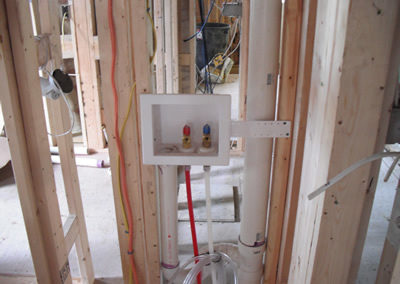
Washing Machine Register - Notice Waste Pipe and Individual Water Supply Lines
-
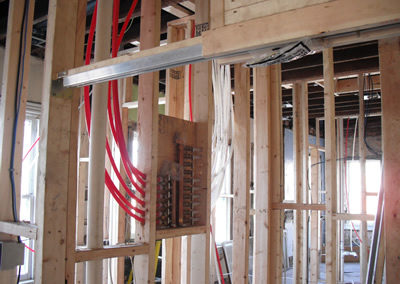
Central Distribution Manifold - Second Floor
-
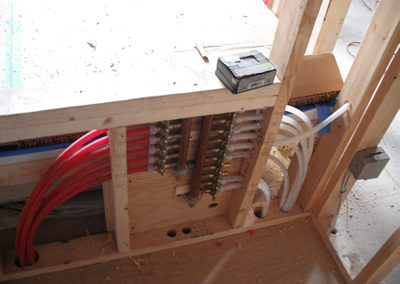
Central Distribution Manifold - First Floor
-
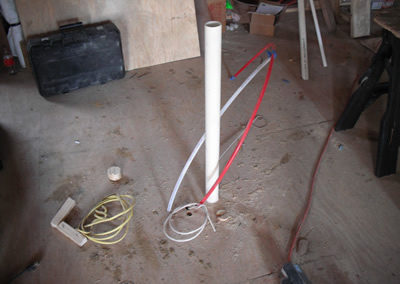
PEX Supply Lines & Waste Rouch-ins for Kitchen Island - First Floor
-
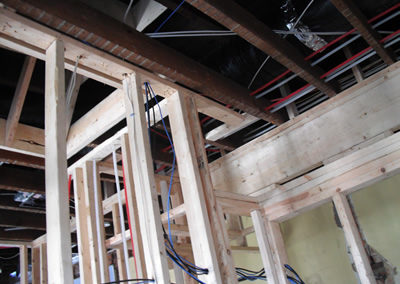
PEX Piping Running Above Ceiling Joists - Second Floor
-
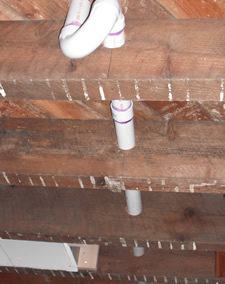
Master Bath Waste Line - Second Floor
-
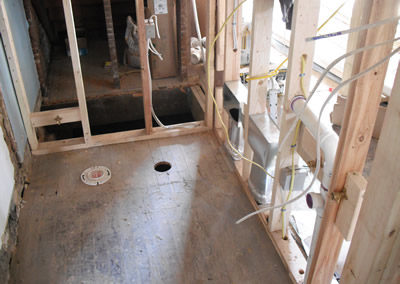
Powder Room Waste Rough-ins (Toilet & Sink) - First Floor
-
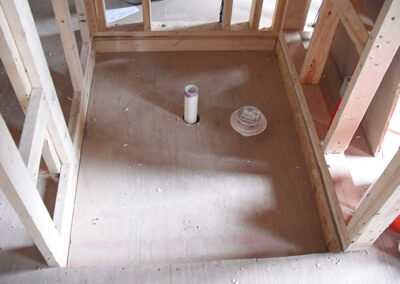
Shower Drain Rough-in in First Floor Master Bath
-
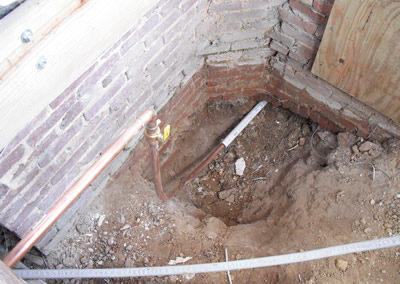
Main Water Supply Entering House Through Basement Crawlspace
